Broad Research Interests of this project include:
Spatial Ecology · Animal Behavior · Genetics · Ecotoxicology · Diet · Human Dimensions
Why in the world do we want to study Alligators? (Our Moms wanted to know too…)
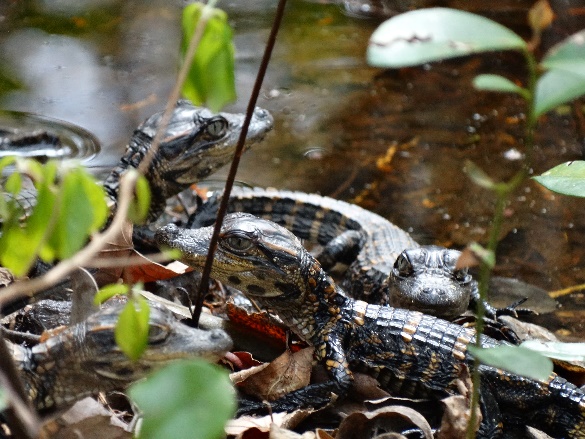
Photo Credit: Michael Lavery
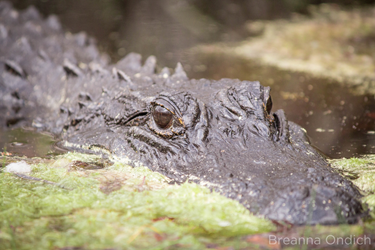
Photo Credit: Breanna Ondich
- • Because they are amazing!! Alligators are one of our only predators who maximize use of the water and the land. Plus, of all animals, they have changed the least morphologically over the course of their existence on this planet. They have a good strategy!
- • We can relate to them! They are charismatic, intelligent, long-lived, and they care a lot about their kids (See our header photo for proof 😉)
- • As apex predators, consuming many prey items that humans also consume (fish, shrimp, blue crab, waterfowl, deer, etc.), they make a great species for monitoring ecosystem health (and potentially human health)!
- • They serve as critical ecosystem engineers and create habitat for other plants and animals through the creation of dens and wallows that fill with water in the dry seasons
- • Make great models for wildlife management and conservation practices.
- • American alligators were the first species to be listed as federally endangered and and recover through the Endangered Species Act! We hope to keep learning about them so they can stick around for many years to come!
What questions are we addressing?
- • How do alligators move throughout the swamp at different times of year? What are their behaviors in how they select mates, or pick where to get a meal or have their babies? Where are they relative to human activity?
- • How can we use genetics to understand Okefenokee’s alligator populations? Who are the parents of those babies (one “clutch” of eggs can have multiple Dads!)? What are the implications of reproductive events for the long-term viability and conservation of Okefenokee’s alligator populations?
- • How much mercury (a heavy metal contaminant) is in alligators of different ages and from different places? In other words, how can we use ecotoxicology to better understand the health of the swamp’s alligators?
- • What are they eating and where? Does their diet change as they get older? Do they eat the same thing as we (people) do?
- • Given that alligators are long-lived animals like us, and eat some of the same things, can our research on alligator health help inform us about our own health?
How are we accomplishing this?
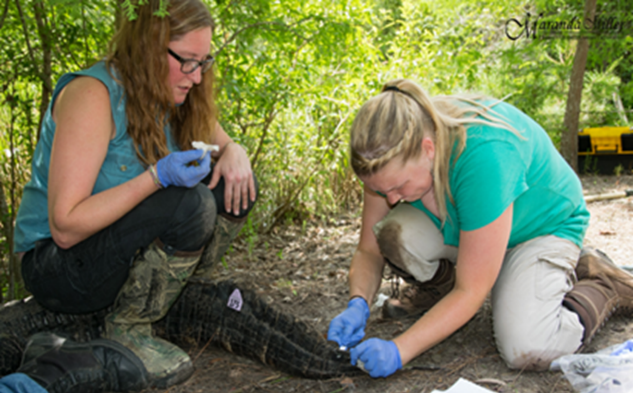
Photo Credit: Maranda Miller – Human Element Conservation
- • Satellite tags on alligators to investigate spatial ecology and habitat preference.
- • Genetic samples to understand relatedness of alligators of different age classes and from different locations within the swamp
- • Biological samples for ecotoxicology and genetic analysis. Blood, tissue, and stomach contents collect from live animals, unharmed and released. (See photot to the right wehre Kimberly and Kristen are taking tissue samples from an adult female!)
- • Heavy Metal Analysis. All blood samples are tested for total mercury (Hg) levels, which has been proven to cause health issues across many species, including humans. (The photo below shows Kristen working in the lab with Alligator blood!)
- • Stable Isotope Analysis. Gives us a broader understanding of the habitats used and prey items consumed by each alligator and how it relates to heavy metal accumulation
Why we need your support!

Photo Credit: Trey Cooper – UGA Marine Extension
- • So Kristen can get her degree! She needs assistance with covering laboratory fees for analysis of the samples. These results will constitute her Masters thesis in Ecology.
- • Satellite tags tell a really fun story! It is kind of like getting to a reality show for alligators. However, stalking alligators around the clock is not cheap. If you sponsor a tag, you can stalk them with us! All of our animals are being featured on the OCEARCH TRACKING APP (see photo below). We’d love for you to sponsor a satellite tag and follow along! You also get some sweet behind-the-scenes updates with a sponsorship.
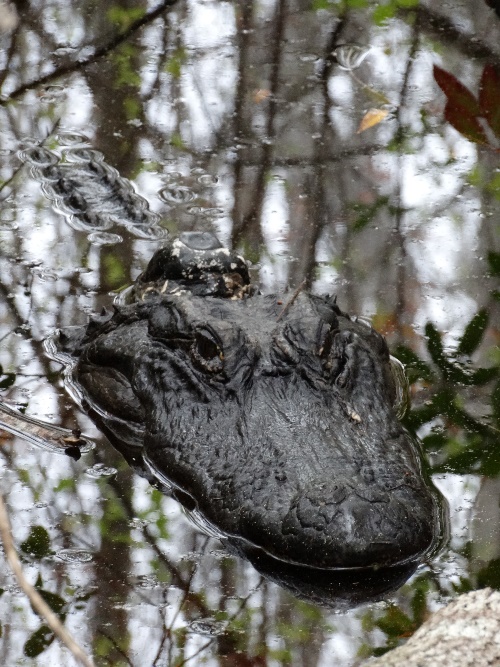
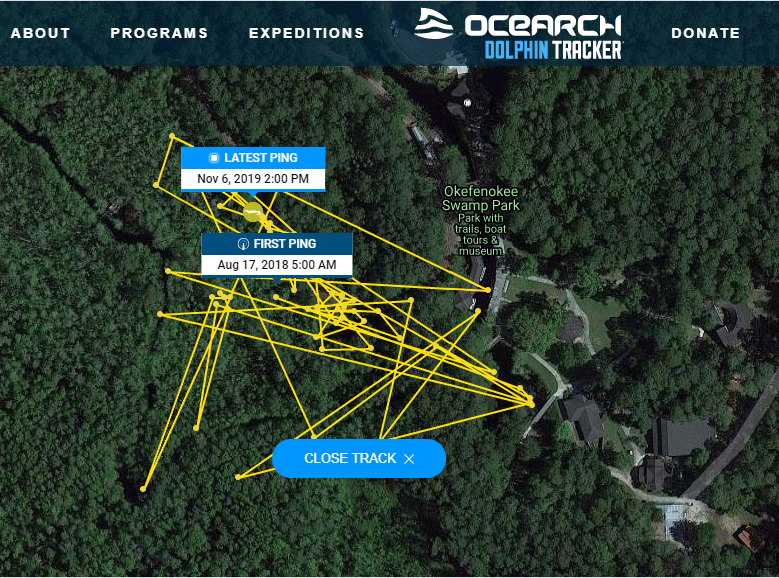
Photo Credit: Michael Lavery & OCEARCH
› Interested in seeing how our trained team of biologists safely catches adult alligators? Checkout this short video by Maranda Miller! Alligator Capture and Data Collection
› For more information on sponsoring a tag or project updates, please contact our researchers at Kzemaitis@uga.edu or kma77@uga.edu